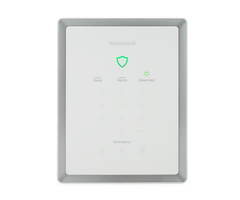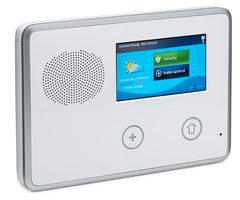How do I change Primary & Secondary Z-Wave controllers?
Now that Honeywell and 2GIG alarm systems support Z-Wave controllers we have seen a spike in questions regarding home automation control. The Honeywell Lyric Controller and Gateway and the 2GIG GC2 and GC3 have integrated Z-Wave controllers. Z-Wave is a wireless technology that allows a controller to automate commands to devices like lights, locks and thermostats. This wireless technology uses a mesh network design to repeat signals from node to node. The general rule is that the network allows up to 4 hops for a message to travel between Controller, and the device being controlled.
There can only be one primary controller that will include (add new devices) and exclude (remove existing devices) from the network. Multiple secondary controllers can be "included" into this same network. The secondary controllers may control the same devices and can be integrated into their own scenes, rules and scheduling. The first controller involved in a network is the primary by default. If another controller is added it can be setup as a secondary controller, or you can shift primary control over to the new controller.
First we will review adding a secondary controller. Although the exact process may slightly vary on each device the general concept of including a secondary controller remains constant. Generally this requires placing the primary controller in inclusion mode (same process as adding other devices) and pressing the "learn" function on the secondary controller. For example, the Lyric Controller and Lynx Touch panels have a learn function located in advanced tools under the automation section. Once the Lyric or Lynx has been added as a secondary controller, any existing devices learned into the primary will be migrated to the secondary, once the process is complete. It is always wise to give the system about 10 minutes to optimize the mesh network's most efficient path to each device.
Let's say a new Z-Wave hub supports a wider array of devices than your current Primary controller. Rather than setting up a new hub as a secondary why not shift over primary control? This way the new primary controller is capable of including and excluding. Similar to the learning function discussed above this requires a button press on each controller. For example, a Lyric Controller has a button labeled, "Primary to Secondary Controller Shift" in advanced tools. If the Lyric is currently the primary controller pressing this button will shift all the enrolled Z-Wave devices and more importantly authorize the new primary controller the ability to learn in new devices. Again the other controller involved should be put into inclusion mode first.
Primary and secondary controllers are capable of executing manual control of enrolled devices. Automated scenes, rules and schedules can be customized on each controller. This includes a discrete command to a single device, a collection of commands to several devices (a scene), a command based on a certain time or recurring action such as sunset or sunrise (a schedule) and a group of commands based on a trigger input (rule). Alarm systems have the advantage of existing alarm equipment to serve as rule trigger points. These triggers include zone faults (opening door, tripped motion or glass break and a button press on a wireless key fob), sensor alarms, arming/disarming, and much more.
Update!: The Samsung SmartThings Z-Wave hub now plays nicely with the Lyric. See our detailed FAQ.
Did you find this answer useful?
We offer alarm monitoring as low as $10 / month
Click Here to Learn MoreRelated Products




Related Categories
- Answered
- Answered By
- Frank Longo
